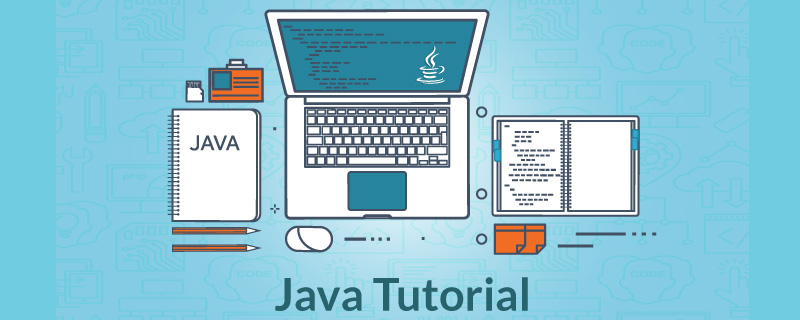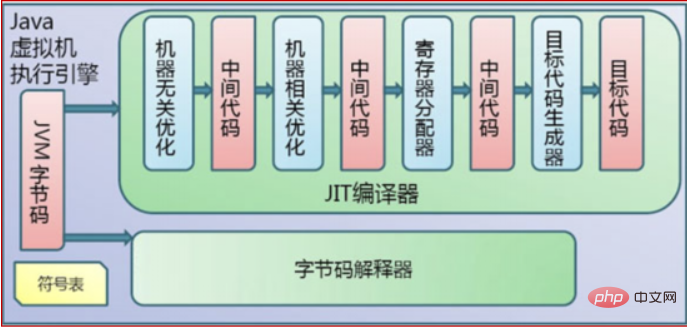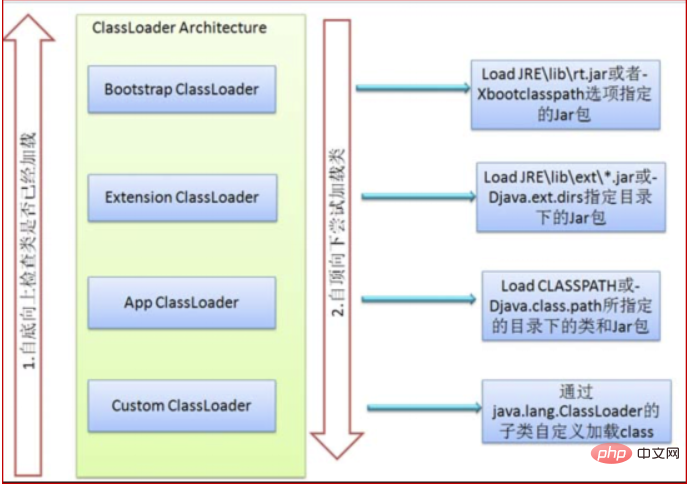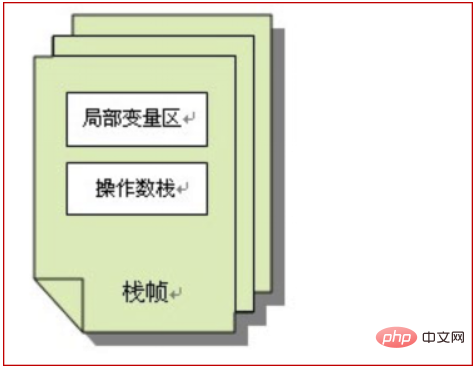java code compilation sequence: first the source code enters the lexical analyzer, and then the token stream enters the syntax analyzer; then the abstract syntax tree is processed and then the semantic analyzer is performed; then the abstract syntax tree is annotated and generated using bytecode processor; finally generates jvm bytecode.

Java code compilation sequence:
Java code compilation is completed by the Java source code compiler. The flow chart is as follows:

The execution of Java bytecode is completed by the JVM execution engine. The flow chart is as follows:

The entire process of Java code compilation and execution includes the following three important mechanisms: 1) Java source code compilation mechanism; 2) Class loading mechanism; 3) Class execution mechanism
Among them, Java source code compilation consists of the following three processes: 1) analysis and input to the symbol table; 2) annotation processing; 3) semantic analysis and generation of class files
The flow chart is as follows:

The finally generated class file consists of the following parts:
1) Structural information. Includes class file format version number and information on the number and size of each part.
2) Metadata. Corresponds to information about declarations and constants in Java source code. Contains declaration information of classes, inherited superclasses, implemented interfaces, domain and method declaration information, and constant pools.
3) Method information. Corresponds to the information corresponding to statements and expressions in Java source code. Contains bytecode, exception handler table, evaluation stack and local variable area size, evaluation stack type record, and debugging symbol information.
Class loading mechanism
JVM class loading is completed through ClassLoader and its subclasses. The hierarchical relationship and loading order of the classes are as shown in the figure below:

1) BootStrap ClassLoader
is responsible for loading all classes in the jre/lib/rt.jar package in $JAVA_HOME. It is implemented by C and is not a ClassLoader subclass
2) Extension ClassLoader
is responsible for loading some jar packages for extension functions in the Java platform, including jars in the directory specified by jre/lib/*.jar or -Djava.ext.dirs in $JAVA_HOME Bag.
3) App ClassLoader
is responsible for recording the jar package specified in the classpath and the class in the directory
4) Custom ClassLoader
belongs to the application according to its own needs Customized ClassLoaders, such as tomcat and jboss, will implement ClassLoader according to j2ee specifications.
During the loading process, it will first check whether the class has been loaded. The checking order is from bottom to top, from Custom ClassLoader to BootStrap. ClassLoader checks layer by layer. As long as a certain classloader has been loaded, the class is considered loaded, ensuring that this class is only loaded once. The loading order is from top to bottom.
Class execution mechanism
JVM is based on the stack architecture to execute class bytecode. After a thread is created, a program counter (PC) and a stack (Stack) will be generated. The program counter stores the next instruction to be executed. Each stack frame is stored in the stack. Each stack frame corresponds to each call of each method. The stack frame is composed of two parts: the local variable area and the operand stack. The local variable area is used to store local variables in the method. and parameters, the operand stack is used to store intermediate results generated during method execution. The structure of the stack is as follows:

Related free learning recommendations: java basic tutorial
The above is the detailed content of What is the compilation order of java code. For more information, please follow other related articles on the PHP Chinese website!

Hot AI Tools

Undress AI Tool
Undress images for free

Undresser.AI Undress
AI-powered app for creating realistic nude photos

AI Clothes Remover
Online AI tool for removing clothes from photos.

Clothoff.io
AI clothes remover

Video Face Swap
Swap faces in any video effortlessly with our completely free AI face swap tool!

Hot Article

Hot Tools

Notepad++7.3.1
Easy-to-use and free code editor

SublimeText3 Chinese version
Chinese version, very easy to use

Zend Studio 13.0.1
Powerful PHP integrated development environment

Dreamweaver CS6
Visual web development tools

SublimeText3 Mac version
God-level code editing software (SublimeText3)
 VSCode settings.json location
Aug 01, 2025 am 06:12 AM
VSCode settings.json location
Aug 01, 2025 am 06:12 AM
The settings.json file is located in the user-level or workspace-level path and is used to customize VSCode settings. 1. User-level path: Windows is C:\Users\\AppData\Roaming\Code\User\settings.json, macOS is /Users//Library/ApplicationSupport/Code/User/settings.json, Linux is /home//.config/Code/User/settings.json; 2. Workspace-level path: .vscode/settings in the project root directory
 How to handle transactions in Java with JDBC?
Aug 02, 2025 pm 12:29 PM
How to handle transactions in Java with JDBC?
Aug 02, 2025 pm 12:29 PM
To correctly handle JDBC transactions, you must first turn off the automatic commit mode, then perform multiple operations, and finally commit or rollback according to the results; 1. Call conn.setAutoCommit(false) to start the transaction; 2. Execute multiple SQL operations, such as INSERT and UPDATE; 3. Call conn.commit() if all operations are successful, and call conn.rollback() if an exception occurs to ensure data consistency; at the same time, try-with-resources should be used to manage resources, properly handle exceptions and close connections to avoid connection leakage; in addition, it is recommended to use connection pools and set save points to achieve partial rollback, and keep transactions as short as possible to improve performance.
 python itertools combinations example
Jul 31, 2025 am 09:53 AM
python itertools combinations example
Jul 31, 2025 am 09:53 AM
itertools.combinations is used to generate all non-repetitive combinations (order irrelevant) that selects a specified number of elements from the iterable object. Its usage includes: 1. Select 2 element combinations from the list, such as ('A','B'), ('A','C'), etc., to avoid repeated order; 2. Take 3 character combinations of strings, such as "abc" and "abd", which are suitable for subsequence generation; 3. Find the combinations where the sum of two numbers is equal to the target value, such as 1 5=6, simplify the double loop logic; the difference between combinations and arrangement lies in whether the order is important, combinations regard AB and BA as the same, while permutations are regarded as different;
 Mastering Dependency Injection in Java with Spring and Guice
Aug 01, 2025 am 05:53 AM
Mastering Dependency Injection in Java with Spring and Guice
Aug 01, 2025 am 05:53 AM
DependencyInjection(DI)isadesignpatternwhereobjectsreceivedependenciesexternally,promotingloosecouplingandeasiertestingthroughconstructor,setter,orfieldinjection.2.SpringFrameworkusesannotationslike@Component,@Service,and@AutowiredwithJava-basedconfi
 python pytest fixture example
Jul 31, 2025 am 09:35 AM
python pytest fixture example
Jul 31, 2025 am 09:35 AM
fixture is a function used to provide preset environment or data for tests. 1. Use the @pytest.fixture decorator to define fixture; 2. Inject fixture in parameter form in the test function; 3. Execute setup before yield, and then teardown; 4. Control scope through scope parameters, such as function, module, etc.; 5. Place the shared fixture in conftest.py to achieve cross-file sharing, thereby improving the maintainability and reusability of tests.
 Troubleshooting Common Java `OutOfMemoryError` Scenarios
Jul 31, 2025 am 09:07 AM
Troubleshooting Common Java `OutOfMemoryError` Scenarios
Jul 31, 2025 am 09:07 AM
java.lang.OutOfMemoryError: Javaheapspace indicates insufficient heap memory, and needs to check the processing of large objects, memory leaks and heap settings, and locate and optimize the code through the heap dump analysis tool; 2. Metaspace errors are common in dynamic class generation or hot deployment due to excessive class metadata, and MaxMetaspaceSize should be restricted and class loading should be optimized; 3. Unabletocreatenewnativethread due to exhausting system thread resources, it is necessary to check the number of threads, use thread pools, and adjust the stack size; 4. GCoverheadlimitexceeded means that GC is frequent but has less recycling, and GC logs should be analyzed and optimized.
 How to work with Calendar in Java?
Aug 02, 2025 am 02:38 AM
How to work with Calendar in Java?
Aug 02, 2025 am 02:38 AM
Use classes in the java.time package to replace the old Date and Calendar classes; 2. Get the current date and time through LocalDate, LocalDateTime and LocalTime; 3. Create a specific date and time using the of() method; 4. Use the plus/minus method to immutably increase and decrease the time; 5. Use ZonedDateTime and ZoneId to process the time zone; 6. Format and parse date strings through DateTimeFormatter; 7. Use Instant to be compatible with the old date types when necessary; date processing in modern Java should give priority to using java.timeAPI, which provides clear, immutable and linear
 Advanced Spring Data JPA for Java Developers
Jul 31, 2025 am 07:54 AM
Advanced Spring Data JPA for Java Developers
Jul 31, 2025 am 07:54 AM
The core of mastering Advanced SpringDataJPA is to select the appropriate data access method based on the scenario and ensure performance and maintainability. 1. In custom query, @Query supports JPQL and native SQL, which is suitable for complex association and aggregation operations. It is recommended to use DTO or interface projection to perform type-safe mapping to avoid maintenance problems caused by using Object[]. 2. The paging operation needs to be implemented in combination with Pageable, but beware of N 1 query problems. You can preload the associated data through JOINFETCH or use projection to reduce entity loading, thereby improving performance. 3. For multi-condition dynamic queries, JpaSpecifica should be used






